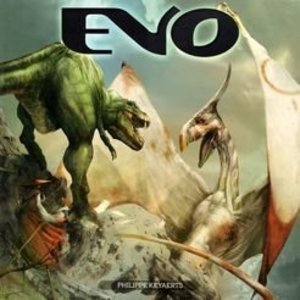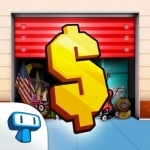
Bid Wars: Storage Auctions
Games and Entertainment
App
Bidding on storage auctions is a very good way to make money, if you’re not afraid to test your...

Cricket Captain 2015
Games and Sports
App
As the Australians arrive on the shores of England ahead of the 2015 series, Cricket Captain is...
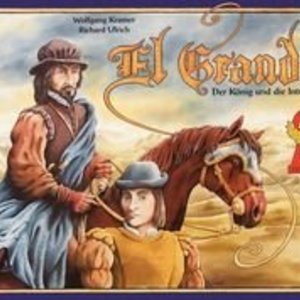
El Grande
Tabletop Game
In this award-winning game, players take on the roles of Grandes in medieval Spain. The king's power...
BoardGames
Purple Phoenix Games (2266 KP) rated Evo (second edition) in Tabletop Games
Oct 11, 2019
Evo pits its players against one another in a clash to populate an island too small for everyone to enjoy harmoniously. It’s a… Small (dino) World, if you will. By improving your clan’s dinosaurs, survivability, and vigor you may be able to establish the most prosperous clan. At least until the meteor hits and wipes everyone off the face of the island anyway…
DISCLAIMER: We do not intend to cover every single rule included in the rule book, but will describe the overall game flow and major rule set so that our readers may get a sense of how the game plays. For more in depth rules, you may purchase a copy online or from your FLGS. -T
Evo is played over several phases over several turns. Exactly how many turns is unknown because the end game is denoted by a randomized meteor token. To setup Evo shuffle the meteor token into the bottom few climate rotation tokens and set them as a stack face down. These will be the round trackers and also will dictate how the climate may change from round to round. Set the climate wheel on the starting space and within view of the players. Shuffle the event cards and place them face down near the enhancement bid board. Give each player the mat, dinomeeples (yay I got one that makes sense!), and bidding totem of their chosen color. Lay the correct map for the amount of players on the table and have each player place their dinomeeples on the corresponding starting spaces on the map. Give each player their starting money (in VP chips). Determine the starting initiative order and place the totems on the bid board in that order. Set aside the combat die and you are finally ready to play!
The first phase of the game is Climate. (after the first round) A new climate token will be revealed which directs the players to adjust the climate wheel or keep it status quo. The climate wheel determines which spaces on the map will have cold, hot, Death-Valley-type, or safe climates for dinos to live on. This is known information at the beginning of the round so the players can plan out the rest of the round to keep their dinos safe before the culling.
The next phase is bidding on enhancements. Draw from the bag enough tokens for the players to quarrel over and place them randomly on the bid board. In initiative order players will bid on enhancements using their VP chips. When a player is outbid for an item they must place their bid totem on another item. Once all players are winning bids on items they pay the supply for their winnings and add it to their mat in the appropriate slots. These could include items to help a dino survive the cold, increase their attack potential, give their dinos more movement (or walks, as we call them), and other special abilities.
Now that the players are enhanced a bit more, their dinosaurs can move on the map. This may be necessary for some, but not all, depending on how they have enhanced their dino clans. A dino can move as many spaces as feet are shown on the player’s board, or the total movement can be split by multiple dinos. The more feet, the more movement. If, during the movement phase, a dino wishes to enter a space currently inhabited by a rival clan’s dinomeeple a combat will occur. Combat is determined by comparing horns and defenses and the roll of the combat die.
Once movement is over, it’s time for the dinos to get saucy – it’s baby-making time! I mean, it’s reproduction time! That’s not appropriate either. You can create one more dinomeeple to place on the map adjacent to another dino. This is how you may expand your empire of cute dinomeeples.
Once these phases are complete the players will consult the climate wheel to see which of their dinos are safe from elimination. For those dinos that are safe a player will earn 1 VP. Play continues in this fashion until the round that the meteor token is flipped from the stack of climate tokens that typically start a round. As the meteor destroys all dinomeeples on the map players will total their VPs and the winner is the clan leader with the most VP at game’s end.
Components. There are a LOT of components in this box. One of the best components in the game is the well-designed box insert. As you unpack the game you can really just setup right out of the box. The maps, bidding board, and climate wheel are normal-style game boards and of good quality. The cards are OK and get the job done. The die is a painted wooden die and it’s fun to roll. The climate tokens, VPs, and enhancement chips are all thick cardboard. The play mats are a matte cardstock (and that’s fine because it just holds your components). The other components are the cloth bag for enhancement draws and those cutie little dinomeeples! Everything is really well-produced and has held up really well for us. My only minor minor complaint is that I wish the dinomeeples were a different shape per color, but everyone having brontosauri is fine with me too. The art. The art is SPECTACULAR on this one. Seriously really great artwork. The cards, the boards, the playmats, the enhancements. Everything looks just amazing.
I kinda already let you know that I love this game. So I am not going to wax poetic here and go into some long analyses of why I love it. It is a more-involved Small World (I hope you caught that shameless reference in the intro) that uses dinosaurs instead of fantasy race/class combos. You know Evo is great when you can compare it to an already-great game from the same designer. I also think you could play Evo and Small World back-to-back and have an enjoyable experience. They are similar, but offer a different experience FOR SURE. I know this one is tough to find nowadays, but please, if you see it for sale in the wild PICK IT UP. It’s a great game that will offer years and years of play for you and your game group. Purple Phoenix Games gives this one a prehistoric 16+ / 18. I say “plus” because I may change it to a 6 in the future. It’s that good.
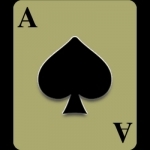
Callbreak Multiplayer
Games
App
Callbreak Multiplayer brings classic and popular card game with online multiplayer feature to the...
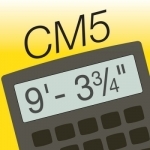
Construction Master 5 -- Feet Inch Fraction Construction Math Calculator for Builders, Contractors, Carpenters, Engineers, Architects and other Building Professionals
Utilities and Productivity
App
Feet-Inch-Fraction Construction-Math Calculator by Calculated Industries The official Construction...
BookwormMama14 (18 KP) rated Until the Dawn (Until the Dawn, #1) in Books
Jan 2, 2019
Quentin Vandermark is of the belief that if you can't see it or touch it, then it doesn't exist. This includes God and the supernatural power his grandfather, Nickolaas Vandermark, believes is cursing Dierenpark. A tragedy occured 60 years ago and the Vandermark's left Dierenpark abandoned ever since. The family returns without notice, only to see it destroyed. Nickolaas is determined to tear down Dierenpark in hopes of demolishing the "curse" that seems to have haunted the family for centuries. Widowed and injured, Quentin brings his son Pieter with him to Dierenpark to tear down the beautiful home. He is just doing his grandfather's bidding when his life is drastically changed. At Dierenpark he meets Sophie van Riijn, Sophie is a volunteer for the newly established Weather Bureau. For the last nine years she has used the roof of Dierenpark for her weather station, without the permission of the owners. Pieter immediately takes to Sophie, not having a mother of his own, he craves a motherly figure. While Quentin is all cynicism, doubt, gloom and depression. Sophie exudes life, hope, joy and faith in every ounce of her being. The past is finally brought to light, but is it in time to save Dierenpark and Quentin? Will science be able to prove the strange goings on? Will Quentin open himself up to love? Or will he brood in his misery until his last breath?
"Above all else, love one another."
The progressive era is a fascinating time period to read. So many scientific advances and discoveries take place in this era. I am currently watching Murdoch Mysteries (Netflix). It is set in the same time as this book and the scientific progress that is witnessed is incredible! Until the Dawn is a story of good and evil, life and death, hope and despair. With our main characters so completely different it is very clear to see how our beliefs affect every aspect of our lives. The main theme throughout this story is love. Through the good times and difficulties, God has called us to love one another. I have heard that this story has been compared to Jane Eyre and I do see similarities. Quentin is a horrid, miserable man and Sophie longs to see him saved. I won't expand anymore because of spoilers, but if you are a fan of Jane Eyre, I believe you will enjoy this recent publication by Elizabeth Camden.
I received a free digital copy of Until the Dawn from Bethany House Publishers through NetGalley in exchange for my honest review.

Smartphone Inc.
Tabletop Game
In Smartphone Inc., you become a CEO of one of the largest smartphone-producing companies in the...

